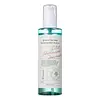What's inside
What's inside
 Key Ingredients
Key Ingredients

 Benefits
Benefits

 Concerns
Concerns

No concerns
 Ingredients Side-by-side
Ingredients Side-by-side

Water
Skin ConditioningDipropylene Glycol
HumectantButylene Glycol
HumectantPvp
Emulsion StabilisingGlycerin
HumectantAmmonium Acryloyldimethyltaurate/Vp Copolymer
Polyglyceryl-10 Laurate
Skin ConditioningCaprylyl Glycol
Emollient1,2-Hexanediol
Skin ConditioningGlyceryl Glucoside
HumectantOenothera Biennis Flower Extract
AstringentUlmus Davidiana Root Extract
Skin ConditioningPueraria Lobata Root Extract
HumectantPinus Palustris Leaf Extract
TonicDipotassium Glycyrrhizate
HumectantTocopherol
AntioxidantPortulaca Oleracea Extract
Skin ConditioningCentella Asiatica Extract
CleansingMadecassic Acid
Skin ConditioningAsiatic Acid
Skin ConditioningMadecassoside
AntioxidantAsiaticoside
AntioxidantSodium Hyaluronate
HumectantHydroxypropyltrimonium Hyaluronate
Hydrolyzed Hyaluronic Acid
HumectantSodium Acetylated Hyaluronate
HumectantHyaluronic Acid
HumectantHydrolyzed Sodium Hyaluronate
Skin ConditioningSodium Hyaluronate Crosspolymer
HumectantPotassium Hyaluronate
Skin ConditioningDisodium EDTA
Hydroxyacetophenone
AntioxidantEthylhexylglycerin
Skin ConditioningWater, Dipropylene Glycol, Butylene Glycol, Pvp, Glycerin, Ammonium Acryloyldimethyltaurate/Vp Copolymer, Polyglyceryl-10 Laurate, Caprylyl Glycol, 1,2-Hexanediol, Glyceryl Glucoside, Oenothera Biennis Flower Extract, Ulmus Davidiana Root Extract, Pueraria Lobata Root Extract, Pinus Palustris Leaf Extract, Dipotassium Glycyrrhizate, Tocopherol, Portulaca Oleracea Extract, Centella Asiatica Extract, Madecassic Acid, Asiatic Acid, Madecassoside, Asiaticoside, Sodium Hyaluronate, Hydroxypropyltrimonium Hyaluronate, Hydrolyzed Hyaluronic Acid, Sodium Acetylated Hyaluronate, Hyaluronic Acid, Hydrolyzed Sodium Hyaluronate, Sodium Hyaluronate Crosspolymer, Potassium Hyaluronate, Disodium EDTA, Hydroxyacetophenone, Ethylhexylglycerin
Water
Skin ConditioningDecyl Glucoside
CleansingSodium Cocoyl Glutamate
CleansingChenopodium Quinoa Seed Extract
Skin ConditioningGlycerin
HumectantSodium Lauroyl Glutamate
Betaine
HumectantGlycine Soja Oil
EmollientMelaleuca Alternifolia Leaf Extract
PerfumingChlorphenesin
AntimicrobialHydroxyacetophenone
AntioxidantEthylhexylglycerin
Skin ConditioningCamellia Sinensis Leaf Extract
AntimicrobialHumulus Lupulus Extract
AntimicrobialOcimum Tenuiflorum Extract
Skin ConditioningCentella Asiatica Extract
CleansingCalendula Officinalis Flower Extract
MaskingPrunus Amygdalus Dulcis Fruit Extract
Skin ConditioningCitric Acid
BufferingGeranium Maculatum Oil
MaskingAllantoin
Skin ConditioningWater, Decyl Glucoside, Sodium Cocoyl Glutamate, Chenopodium Quinoa Seed Extract, Glycerin, Sodium Lauroyl Glutamate, Betaine, Glycine Soja Oil, Melaleuca Alternifolia Leaf Extract, Chlorphenesin, Hydroxyacetophenone, Ethylhexylglycerin, Camellia Sinensis Leaf Extract, Humulus Lupulus Extract, Ocimum Tenuiflorum Extract, Centella Asiatica Extract, Calendula Officinalis Flower Extract, Prunus Amygdalus Dulcis Fruit Extract, Citric Acid, Geranium Maculatum Oil, Allantoin
 Reviews
Reviews

Ingredients Explained
These ingredients are found in both products.
Ingredients higher up in an ingredient list are typically present in a larger amount.
Centella Asiatica Extract (Centella) is derived from an herb native to Southeast Asia. It is famous for its anti-inflammatory and soothing properties.
Centella is rich in antioxidants and amino acids, such as Madecassic Acid and Asiaticoside.
Studies show the compounds in centella help with:
The combination of all these properties makes centella effective at soothing, hydrating, and protecting the skin.
Other great components of centella include Vitamin A, vitamin C, several B vitamins, and Asiatic Acid.
Fun fact: Centella has been used as a medicine and in food for many centuries. As a medicine, it is used to treat burns, scratches, and wounds.
Learn more about Centella Asiatica ExtractEthylhexylglycerin (we can't pronounce this either) is commonly used as a preservative and skin softener. It is derived from glyceryl.
You might see Ethylhexylglycerin often paired with other preservatives such as phenoxyethanol. Ethylhexylglycerin has been found to increase the effectiveness of these other preservatives.
Glycerin is already naturally found in your skin. It helps moisturize and protect your skin.
A study from 2016 found glycerin to be more effective as a humectant than AHAs and hyaluronic acid.
As a humectant, it helps the skin stay hydrated by pulling moisture to your skin. The low molecular weight of glycerin allows it to pull moisture into the deeper layers of your skin.
Hydrated skin improves your skin barrier; Your skin barrier helps protect against irritants and bacteria.
Glycerin has also been found to have antimicrobial and antiviral properties. Due to these properties, glycerin is often used in wound and burn treatments.
In cosmetics, glycerin is usually derived from plants such as soybean or palm. However, it can also be sourced from animals, such as tallow or animal fat.
This ingredient is organic, colorless, odorless, and non-toxic.
Glycerin is the name for this ingredient in American English. British English uses Glycerol/Glycerine.
Learn more about GlycerinHydroxyacetophenone is antioxidant with skin conditioning and soothing properties. It also boosts the efficiency of preservatives.
This ingredient is not irritating or sensitizing.
Water. It's the most common cosmetic ingredient of all. You'll usually see it at the top of ingredient lists, meaning that it makes up the largest part of the product.
So why is it so popular? Water most often acts as a solvent - this means that it helps dissolve other ingredients into the formulation.
You'll also recognize water as that liquid we all need to stay alive. If you see this, drink a glass of water. Stay hydrated!
Learn more about Water